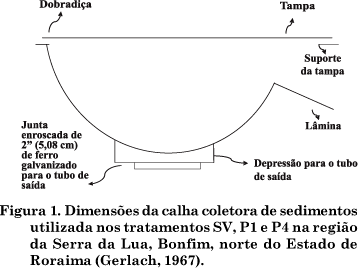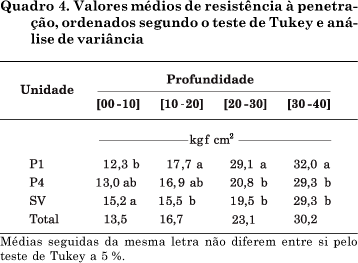As an alternative land use of savanna areas in Roraima, commercial forest stands of Acacia mangium are being increasingly implemented. The purpose of this study was the in situ determination of soil and water losses in commercial stands of Acacia mangium and compare them with those under native savanna. The experiment was conducted on a Red-Yellow Argisol (Ultisol) in the region of Serra da Lua where Gerlach sediment and water collectors were installed. Soil density, texture, penetration resistance and infiltration rate were determined. All climate data were recorded by an automatic weather station placed within the experimental area. The experiment had a randomized block design with three treatments: one-year-old Acacia stand (P1), four-year-old Acacia stand (P4); and native savanna (SV). All experimental data were collected within one year. Results indicated that greater soil and water losses occurred in younger Acacia plantations (P1), followed by savanna (SV) and four-year-old Acacia stands (P4). This was attributed to great soil exposure just after planting, when Acacia trees had not yet developed a good soil cover in these sealing-prone soils. The peak of soil and water loss occurred between April and August, and the practice of downslope planting aggravated soil erosion in Acacia stands. Soil bulk density or organic matter contents were not considered good management indicators for this area.
Red Yellow Ultisols; soil erosion; forest management





